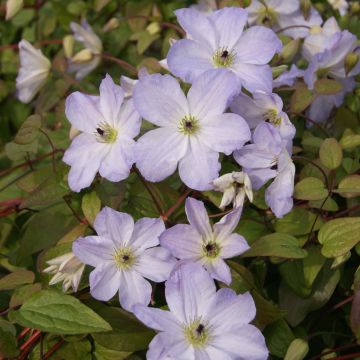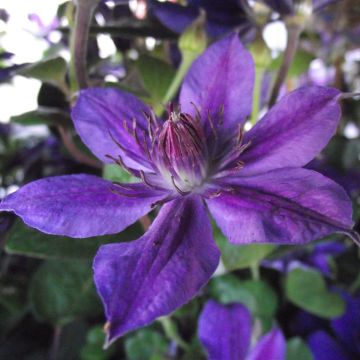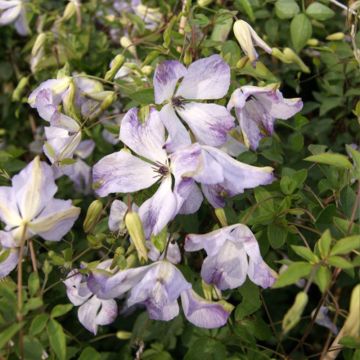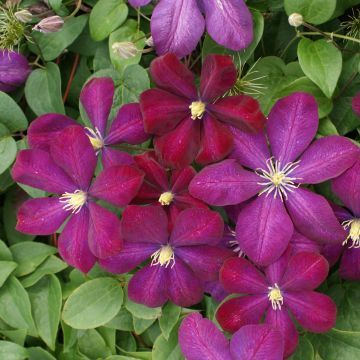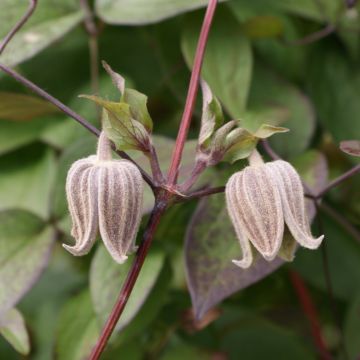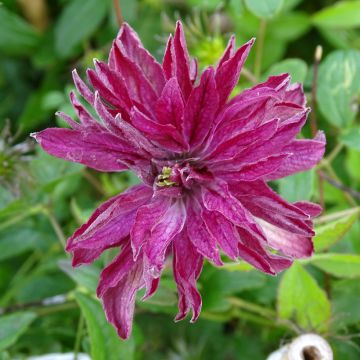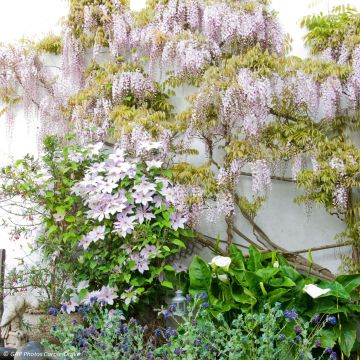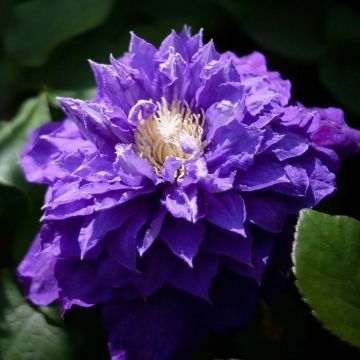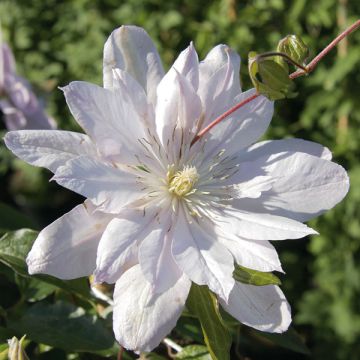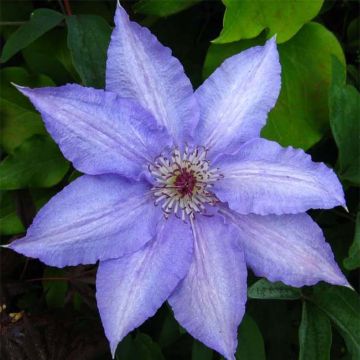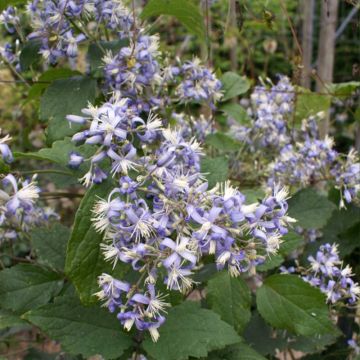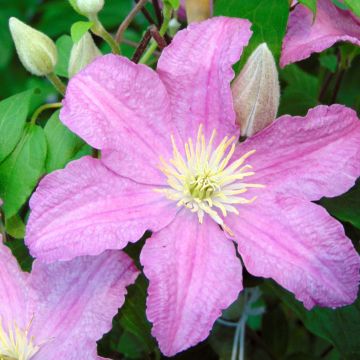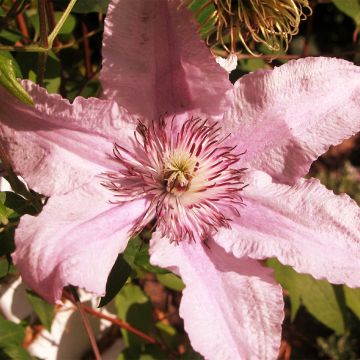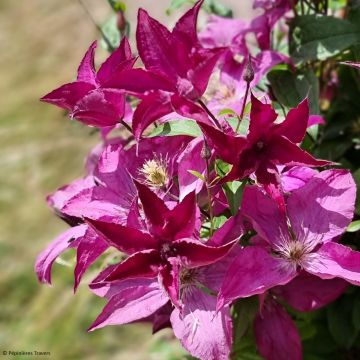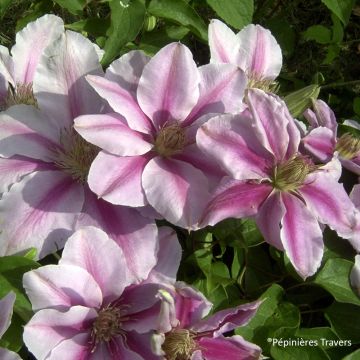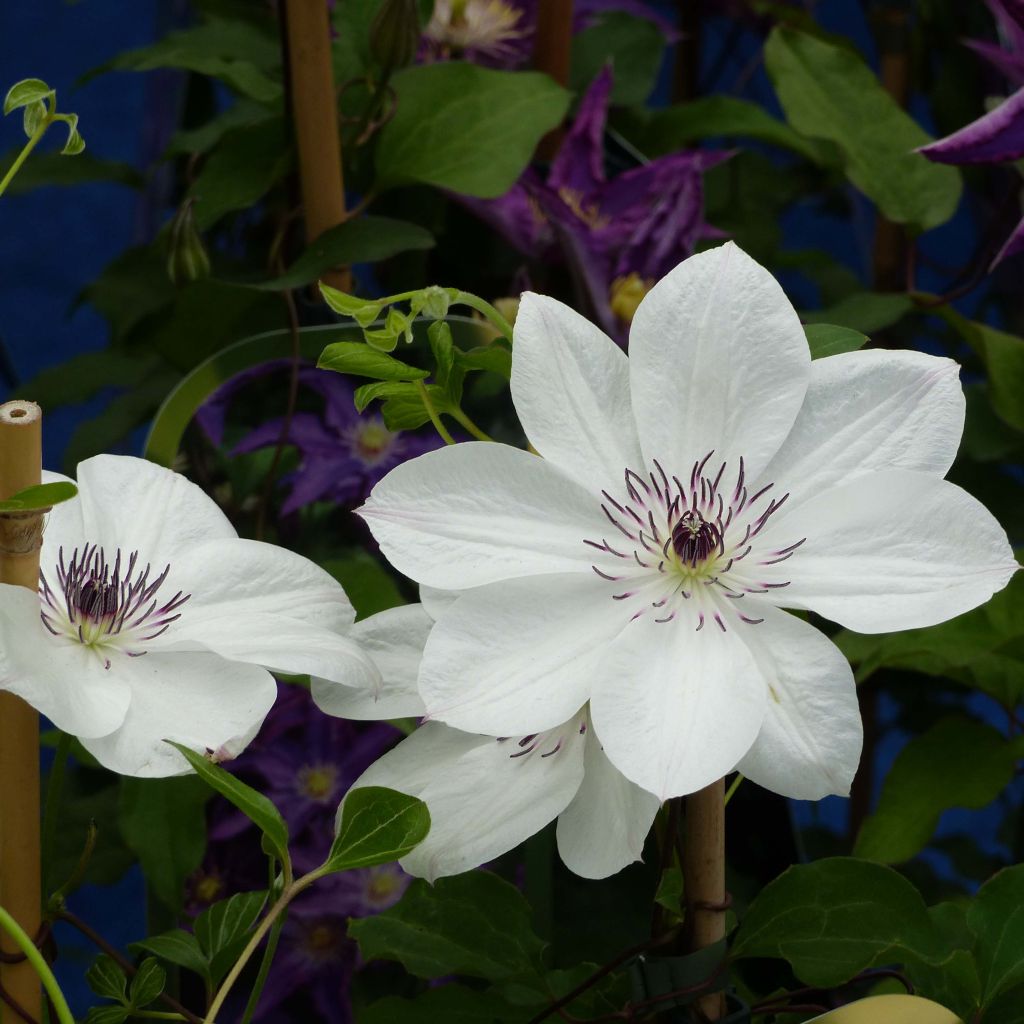

Clematis x patens White Pearl
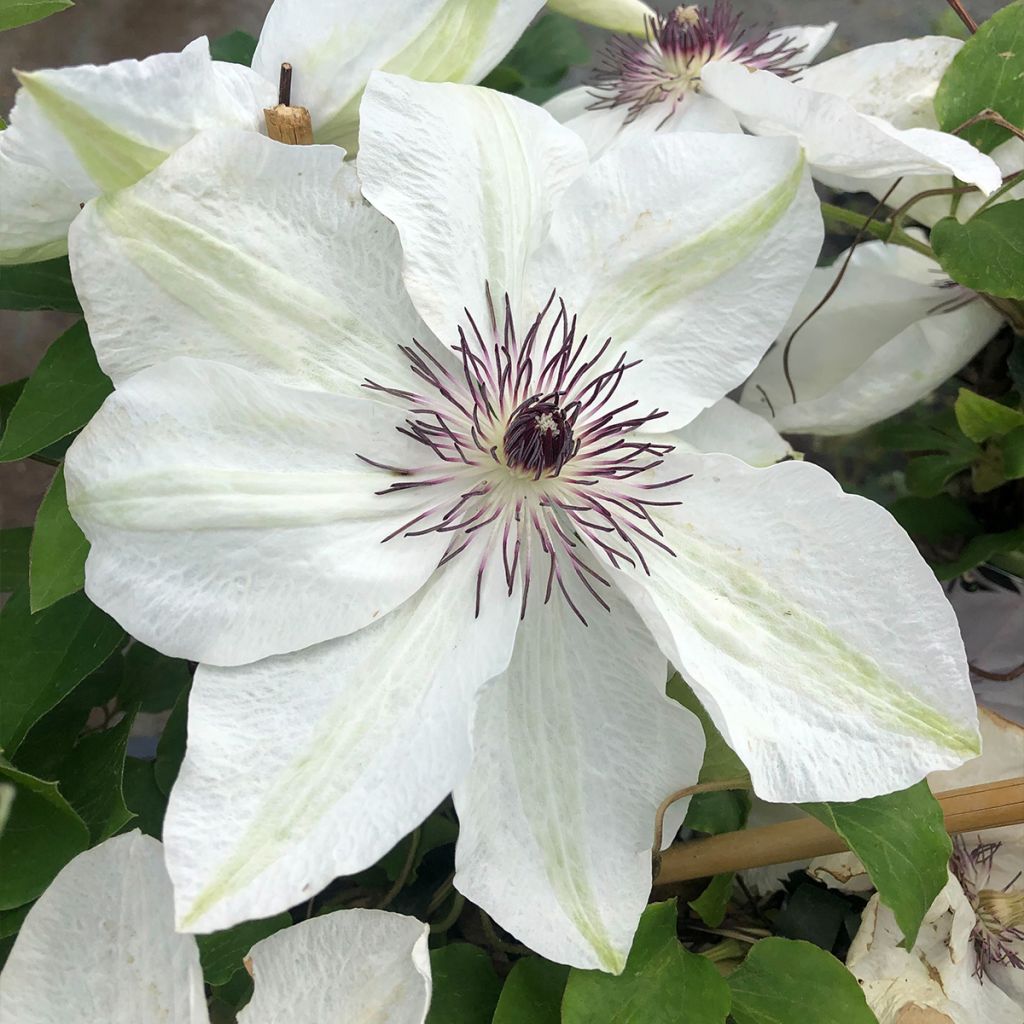

Clematis x patens White Pearl
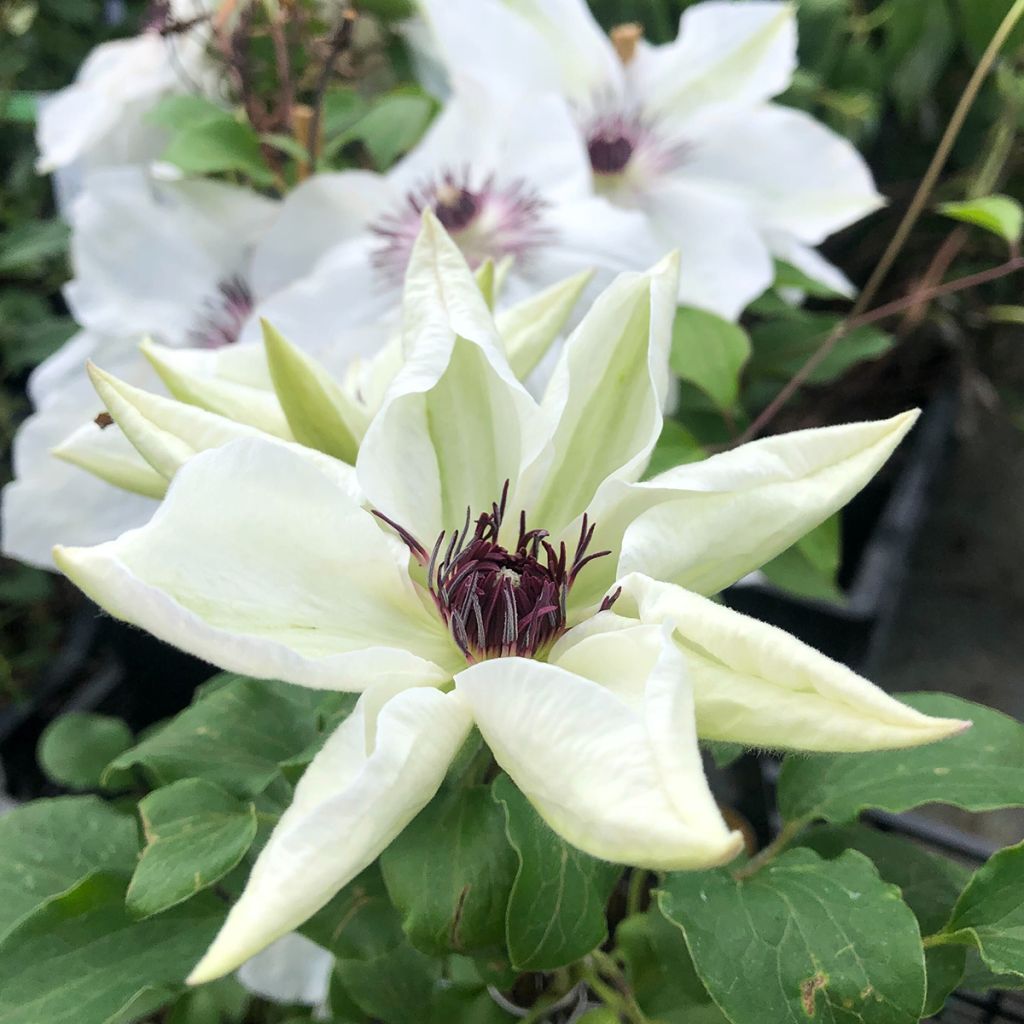

Clematis x patens White Pearl
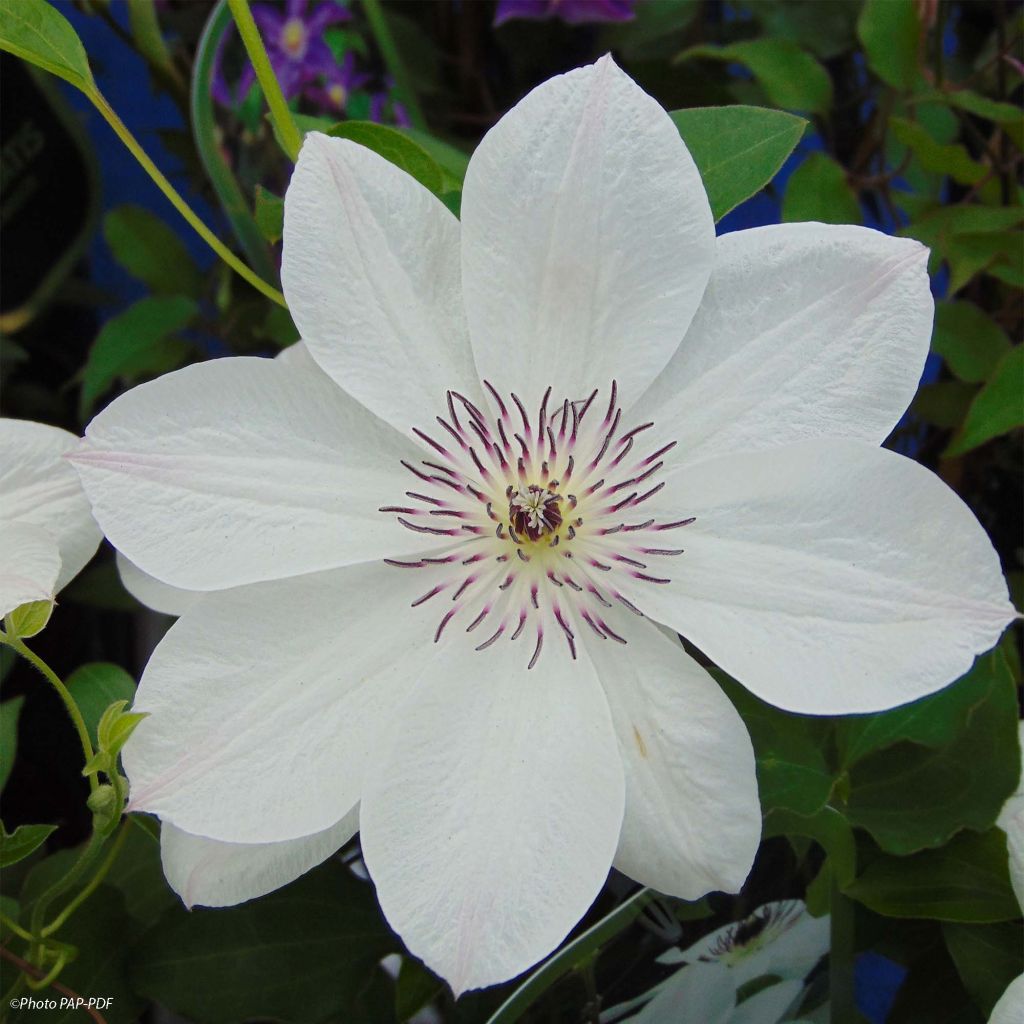

Clematis x patens White Pearl
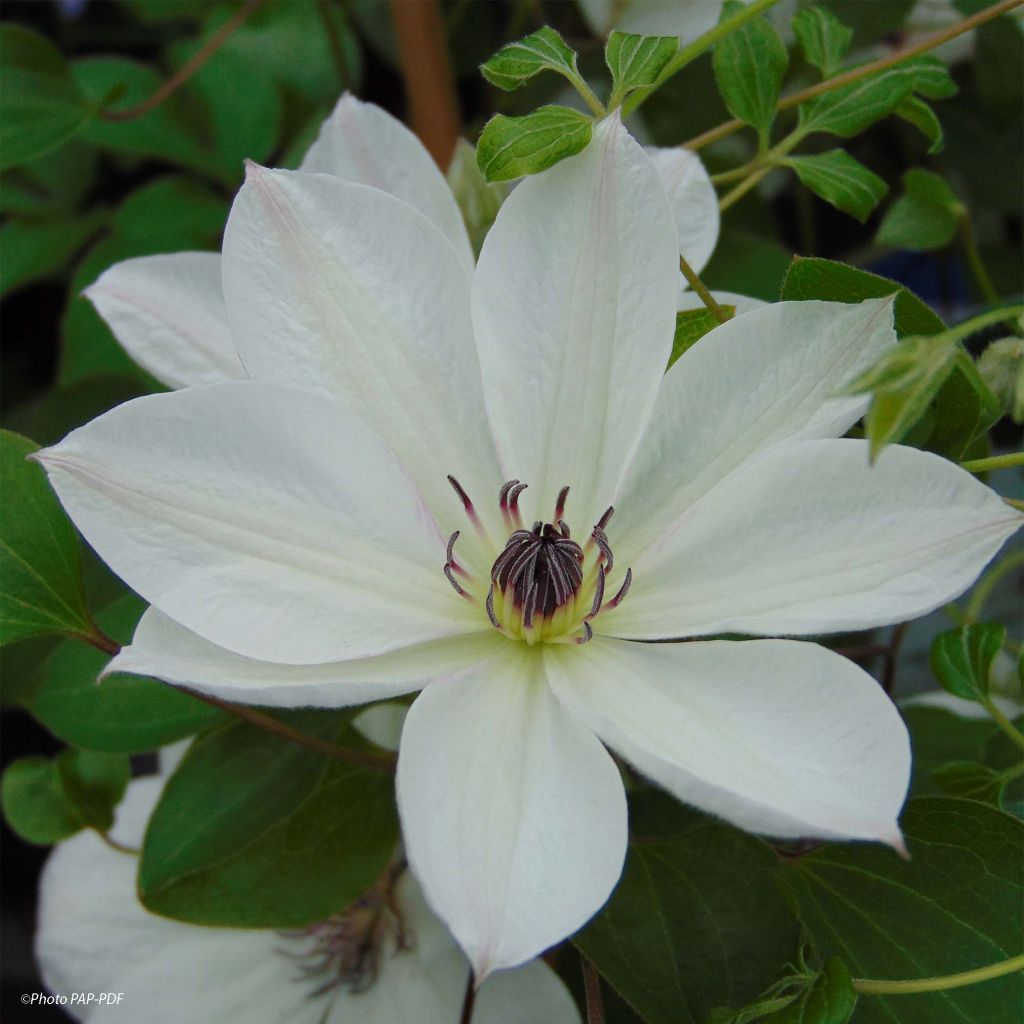

Clematis x patens White Pearl
Clematis x patens White Pearl
Clematis x patens White Pearl Zo08080 PBRaf
This item cannot be shipped to the selected country
Delivery charge from €5.90
More information
Schedule delivery date,
and select date in basket
This plant carries a 6 months recovery warranty
More information
We guarantee the quality of our plants for a full growing cycle, and will replace at our expense any plant that fails to recover under normal climatic and planting conditions.
From €5.90 for pickup delivery and €6.90 for home delivery
Express home delivery from €8.90.
Does this plant fit my garden?
Set up your Plantfit profile →
Description
Clematis 'White Pearl' is a beautiful improvement of C. 'Miss Bateman' to which it bears a resemblance but surpasses in its abundant flowering. It was presented at Plantarium 2016. This modest-sized variety flowers from May to August. Its first flowering is extremely abundant, composed of medium-sized, round and fully open white flowers, delicately adorned with fine dark red stamens. It blooms again more sporadically during summer, with its flowers often having only 6 petals. This small deciduous and romantic clematis climbs everywhere and also grows very well in pots.
Clematis belong to the Ranunculaceae family. The 'White Pearl' variety is a perfectly perennial and hardy semi-woody and climbing plant, which will reach about 2m (7ft) in height, with a minimum spread of 80cm (32in). It has the genes of Clematis patens, a Japanese species with large flowers of varying colours, which is the origin of many cultivars. 'White Pearl' has rounded eight-petalled flowers at the beginning of the season. They measure 8 to 12cm (3 to 5in) in diameter and appear in May-June on the previous year's wood. It can then produce a few flowers on the current year's shoots during summer. The flowers are upright and have a bouquet of dark red stamens in their centre, which contrasts wonderfully with the white petals. The flowering is followed by decorative grey-silver fruits that persist until winter. The deciduous leaves are tripinnate, with fairly dark green leaflets. This clematis clings on its own to the support or to the host plant through petioles transformed into tendrils.
Plant your clematis in the company of climbing roses to extend the flowering period of walls and pergolas until the end of summer. Place pretty perennials like geraniums, carnations, sage nemorosa, and phlox at their base, which will provide the shade they appreciate. It is a genus rich in diversity, with varieties in all colours, shapes, and sizes. Take advantage of their easy cultivation to give your garden a romantic and bohemian touch. 'White Pearl' loves to crawl into bushes and performs very well in a large pot. It will do wonders in a beautiful pot on a patio, in the garden among border plants, or even on a small fence.
Report an error about the product description
Clematis x patens White Pearl in pictures
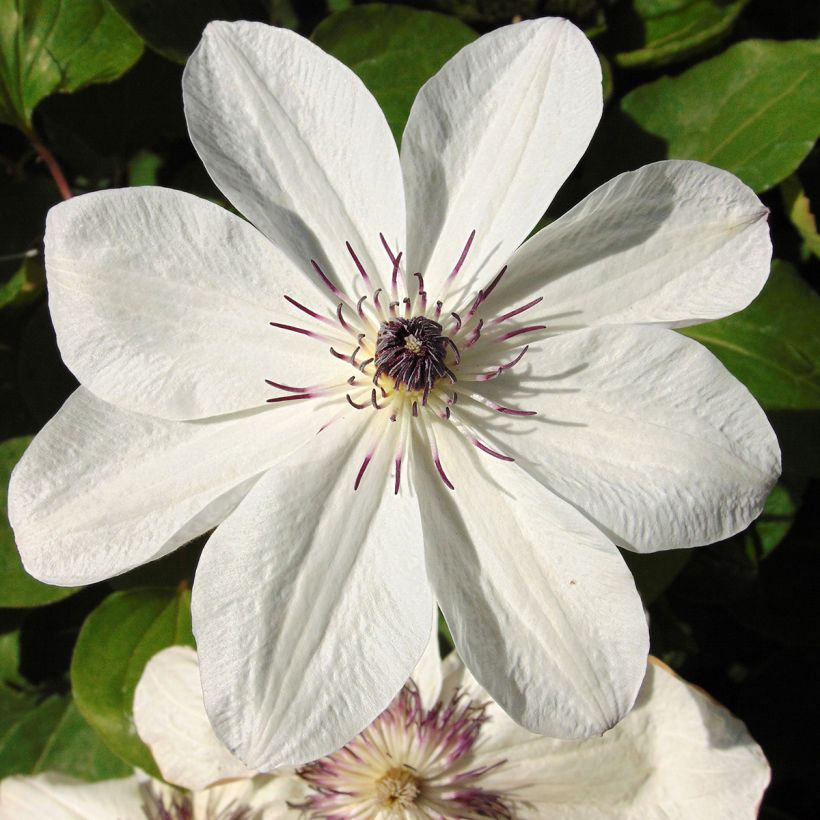

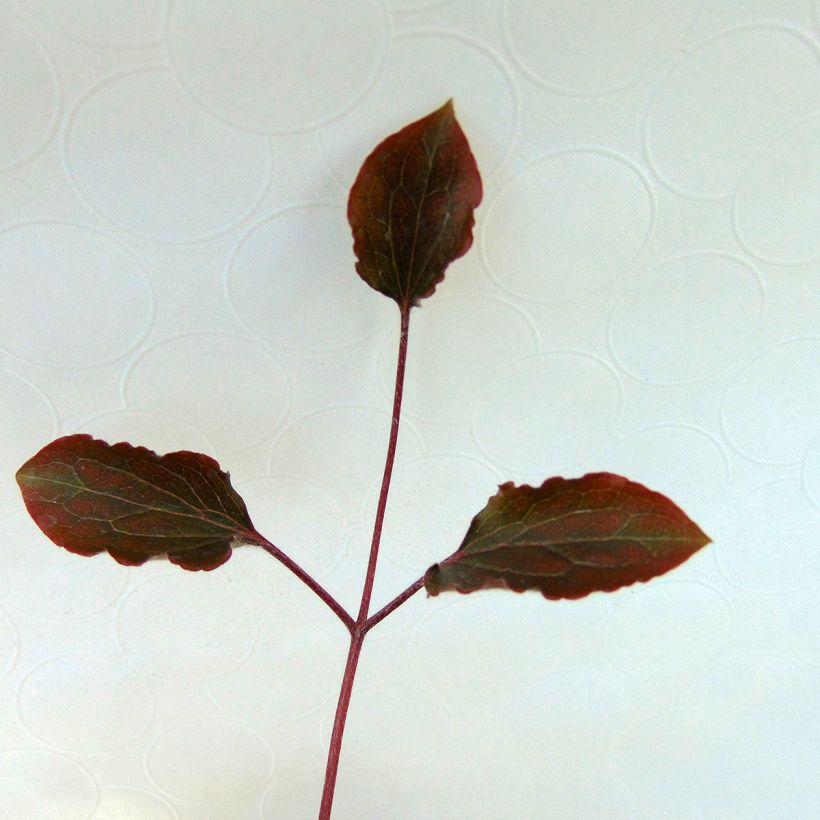

Plant habit
Flowering
Foliage
Botanical data
Clematis
x patens
White Pearl Zo08080 PBRaf
Ranunculaceae
Cultivar or hybrid
Other Clematis Viticella
Planting and care
Clematis 'White Pearl' will appreciate a sunny or lightly shaded position near a tree. Plant it in fertile, humus-rich, well-drained soil, shading the roots and base of the stem (with a flat tile, for example). Clematis should be planted at an angle, with the root ball almost horizontal and oriented towards its support. Work the soil to a depth of 20cm (8in), lightened with good quality compost. Plant it by covering the root ball with 3cm (1in) of soil. After planting, cut back the clematis stems to about 30cm (12in) above a nice pair of buds. Water regularly and generously during the first few weeks. Do not overwater, as stagnant water can lead to the development of fungus at the base of the plant.
Mulch all clematis plants in February with garden compost or well-rotted manure, avoiding direct contact with the stems.
Train the stems, without squeezing them, until the plant can grip onto the support by itself. Clematis also like to grow freely on neighbouring plants.
Prune after the first flowering, in June, to 75cm (30in) from the ground, above a pair of buds.
After a few years, cover the base of your climbing clematis with a small mound of soil to reduce the risk of withering while encouraging new shoots from the stump.
Voles and grey worms can attack clematis and devour the stems. Aphids and greenhouse whiteflies are also potential parasites.
Planting period
Intended location
Care
-
, onOrder confirmed
Reply from on Promesse de fleurs
Clematis
Haven't found what you were looking for?
Hardiness is the lowest winter temperature a plant can endure without suffering serious damage or even dying. However, hardiness is affected by location (a sheltered area, such as a patio), protection (winter cover) and soil type (hardiness is improved by well-drained soil).

Photo Sharing Terms & Conditions
In order to encourage gardeners to interact and share their experiences, Promesse de fleurs offers various media enabling content to be uploaded onto its Site - in particular via the ‘Photo sharing’ module.
The User agrees to refrain from:
- Posting any content that is illegal, prejudicial, insulting, racist, inciteful to hatred, revisionist, contrary to public decency, that infringes on privacy or on the privacy rights of third parties, in particular the publicity rights of persons and goods, intellectual property rights, or the right to privacy.
- Submitting content on behalf of a third party;
- Impersonate the identity of a third party and/or publish any personal information about a third party;
In general, the User undertakes to refrain from any unethical behaviour.
All Content (in particular text, comments, files, images, photos, videos, creative works, etc.), which may be subject to property or intellectual property rights, image or other private rights, shall remain the property of the User, subject to the limited rights granted by the terms of the licence granted by Promesse de fleurs as stated below. Users are at liberty to publish or not to publish such Content on the Site, notably via the ‘Photo Sharing’ facility, and accept that this Content shall be made public and freely accessible, notably on the Internet.
Users further acknowledge, undertake to have ,and guarantee that they hold all necessary rights and permissions to publish such material on the Site, in particular with regard to the legislation in force pertaining to any privacy, property, intellectual property, image, or contractual rights, or rights of any other nature. By publishing such Content on the Site, Users acknowledge accepting full liability as publishers of the Content within the meaning of the law, and grant Promesse de fleurs, free of charge, an inclusive, worldwide licence for the said Content for the entire duration of its publication, including all reproduction, representation, up/downloading, displaying, performing, transmission, and storage rights.
Users also grant permission for their name to be linked to the Content and accept that this link may not always be made available.
By engaging in posting material, Users consent to their Content becoming automatically accessible on the Internet, in particular on other sites and/or blogs and/or web pages of the Promesse de fleurs site, including in particular social pages and the Promesse de fleurs catalogue.
Users may secure the removal of entrusted content free of charge by issuing a simple request via our contact form.
The flowering period indicated on our website applies to countries and regions located in USDA zone 8 (France, the United Kingdom, Ireland, the Netherlands, etc.)
It will vary according to where you live:
- In zones 9 to 10 (Italy, Spain, Greece, etc.), flowering will occur about 2 to 4 weeks earlier.
- In zones 6 to 7 (Germany, Poland, Slovenia, and lower mountainous regions), flowering will be delayed by 2 to 3 weeks.
- In zone 5 (Central Europe, Scandinavia), blooming will be delayed by 3 to 5 weeks.
In temperate climates, pruning of spring-flowering shrubs (forsythia, spireas, etc.) should be done just after flowering.
Pruning of summer-flowering shrubs (Indian Lilac, Perovskia, etc.) can be done in winter or spring.
In cold regions as well as with frost-sensitive plants, avoid pruning too early when severe frosts may still occur.
The planting period indicated on our website applies to countries and regions located in USDA zone 8 (France, United Kingdom, Ireland, Netherlands).
It will vary according to where you live:
- In Mediterranean zones (Marseille, Madrid, Milan, etc.), autumn and winter are the best planting periods.
- In continental zones (Strasbourg, Munich, Vienna, etc.), delay planting by 2 to 3 weeks in spring and bring it forward by 2 to 4 weeks in autumn.
- In mountainous regions (the Alps, Pyrenees, Carpathians, etc.), it is best to plant in late spring (May-June) or late summer (August-September).
The harvesting period indicated on our website applies to countries and regions in USDA zone 8 (France, England, Ireland, the Netherlands).
In colder areas (Scandinavia, Poland, Austria...) fruit and vegetable harvests are likely to be delayed by 3-4 weeks.
In warmer areas (Italy, Spain, Greece, etc.), harvesting will probably take place earlier, depending on weather conditions.
The sowing periods indicated on our website apply to countries and regions within USDA Zone 8 (France, UK, Ireland, Netherlands).
In colder areas (Scandinavia, Poland, Austria...), delay any outdoor sowing by 3-4 weeks, or sow under glass.
In warmer climes (Italy, Spain, Greece, etc.), bring outdoor sowing forward by a few weeks.



































